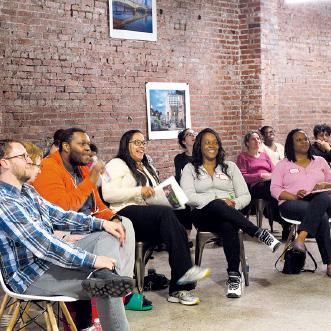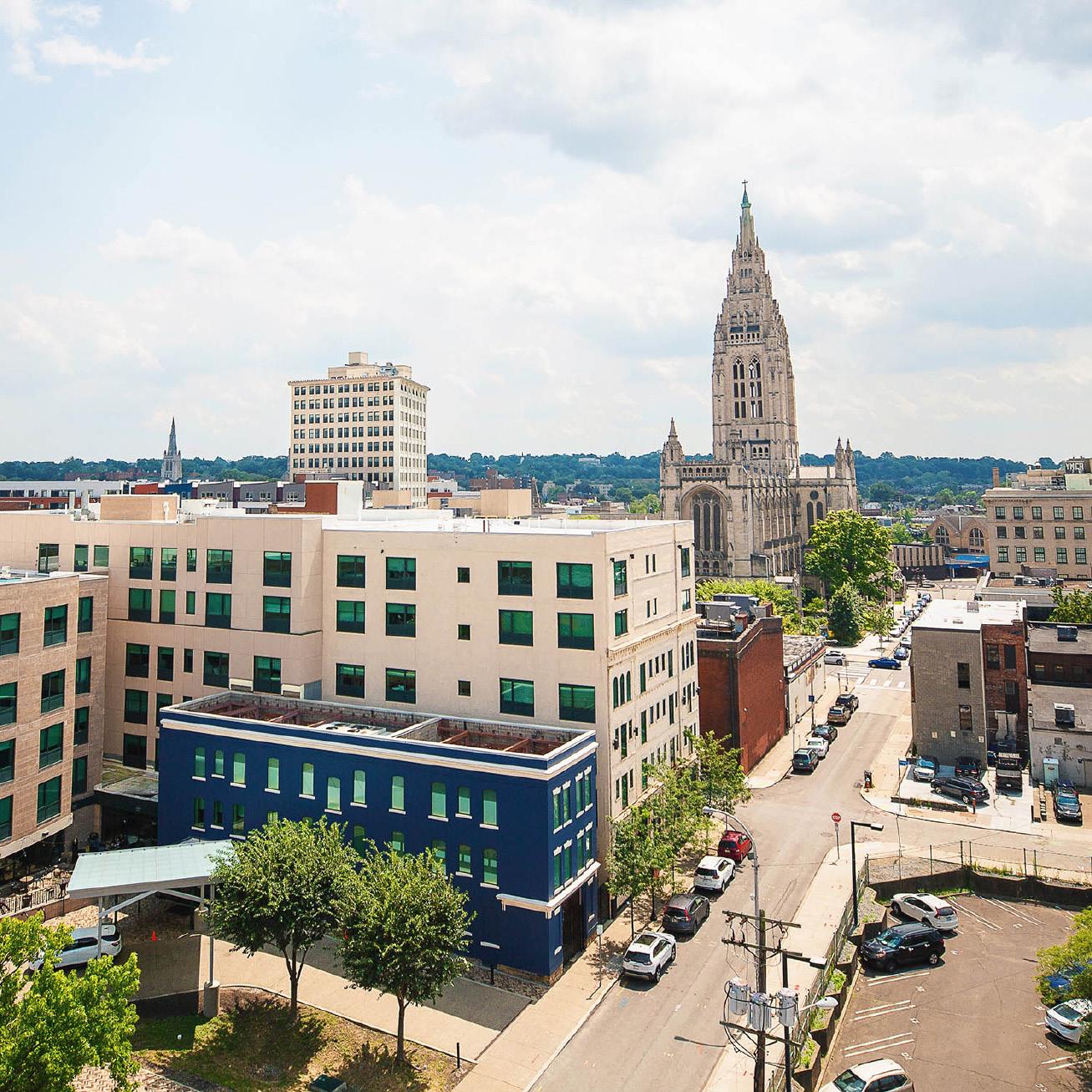
3 minute read
A Meaningful Model for Community Development
Key Interventions
These key interventions form the basis of the PAFI model which resulted in vibrant and safe streets, a thriving business district, and a diverse group of residents living in East Liberty.
1. ESTABLISH DESIGN STANDARDS Design standards were put in place to guide urban, dense, and pedestrian-oriented development.
2. DEVELOP FROM OUR STRONG MARKET EDGES Streetworks, a national consultant who tested various development plans with ELDI, counseled to build from our strong edges and not the most blighted, internal areas of the neighborhood.
3. CREATE A MASTER DEVELOPMENT PLAN This plan became a template for the City and developers to follow.
• Site Acquisition: Nabru Lawener (which is Urban Renewal in reverse)—a joint venture with a private developer for site acquisition and pre-development activities
• Investment Model: ELDI acted as investor rather than developer—influenced urban design and local employment
• Prototype Homes: Designed and built energy-efficient homes on standard-sized urban lots—could be replicated
Reflecting on the progress in East Liberty over the last two decades, there are many successes to celebrate along with many lessons learned.
A key success that stands out is the model that the ELDI team, our partners, and the community created to chart the way forward. The model emerged over the course of many years and consists of four focus areas—Plan, Advocate, Facilitate, and Invest, or as we call it for short PAFI.
The PAFI Model paved the way for several important interventions, and following this effective model continues to fuel progress in East Liberty and beyond.
4. ADDRESS CIRCULATION AND MOBILITY The traditional street grid within Penn Circle that was disrupted by urban renewal was restored and improved.
5. INCREASE HOMEOWNERSHIP A number of important programs and interventions have led to increased homeownership in East Liberty.
• New Markets Tax Credits Strategy: ELDI worked with a national consultant to create a financing structure for market rate and affordable homeownership
• Catapult Greater Pittsburgh (formerly Circles Greater Pittsburgh) / Open Hand Ministries: These programs support wealth creation and homeownership for lower income minority residents

• Enright Court: Rebuilding wealth for minority homeowners—a targeted land recycling effort
6. IMPLEMENT A CRIME INTERVENTION STRATEGY The local analytics consultancy Numeritics conducted a crime study to validate our efforts to manage occupied nuisance rental properties—the study demonstrated that 50% of neighborhood crime comes from only 3% of properties—and that crime does not move to other parts of the neighborhood.
THE PAFI MODEL | PART 1
PlanCommunity development starts with a vision. In East Liberty, that vision was defined by residents in the neighborhood’s 1999 and 2010 community plans. The plans serve as long-term frameworks for revitalization , defining what the community does and does not want to see happen in the neighborhood.

At its peak in the 1940s and 1950s, East Liberty had the third-largest shopping district in the State of Pennsylvania, after Center City, Philadelphia and Downtown Pittsburgh. Among other things, East Liberty's community plans outlined a "Town in a City" vision to restore East Liberty's business district to its former glory.
Community plans are living documents to be re-examined, revised, and updated regularly. They serve as the core document in an ongoing series of planning and strategy documents. The plan provides a structure for actions to address specific needs and provides a springboard from which to conduct strategic plans for specific areas of the neighborhood.
1999 — A VISION FOR EAST LIBERTY
The development of East Liberty’s first community plan—A Vision for East Liberty—began in 1996. This was the first comprehensive plan for the community since the 1960s, when top-down urban renewal planning drastically reshaped the area. Published in 1999, A Vision for East Liberty helped guide the neighborhood’s recovery from failed urban renewal efforts of the past.
The 1999 community plan laid the groundwork for East Liberty’s recovery. In it, the existing residents described their vision of a “Town in a City,” a small-scale, full-service neighborhood within the larger city of Pittsburgh. Drawing on East Liberty’s history as a vibrant cultural and commercial hub, the vision was a thriving urban community that offers commerce, employment, recreation, services, good schools, and diverse housing choices. A closeknit community linked together both physically and socially.




THE 2010 EAST LIBERTY COMMUNITY PLAN — MANY VOICES DRIVING NEIGHBORHOOD CHANGE
Recognizing the success that followed the 1999 plan, ELDI










